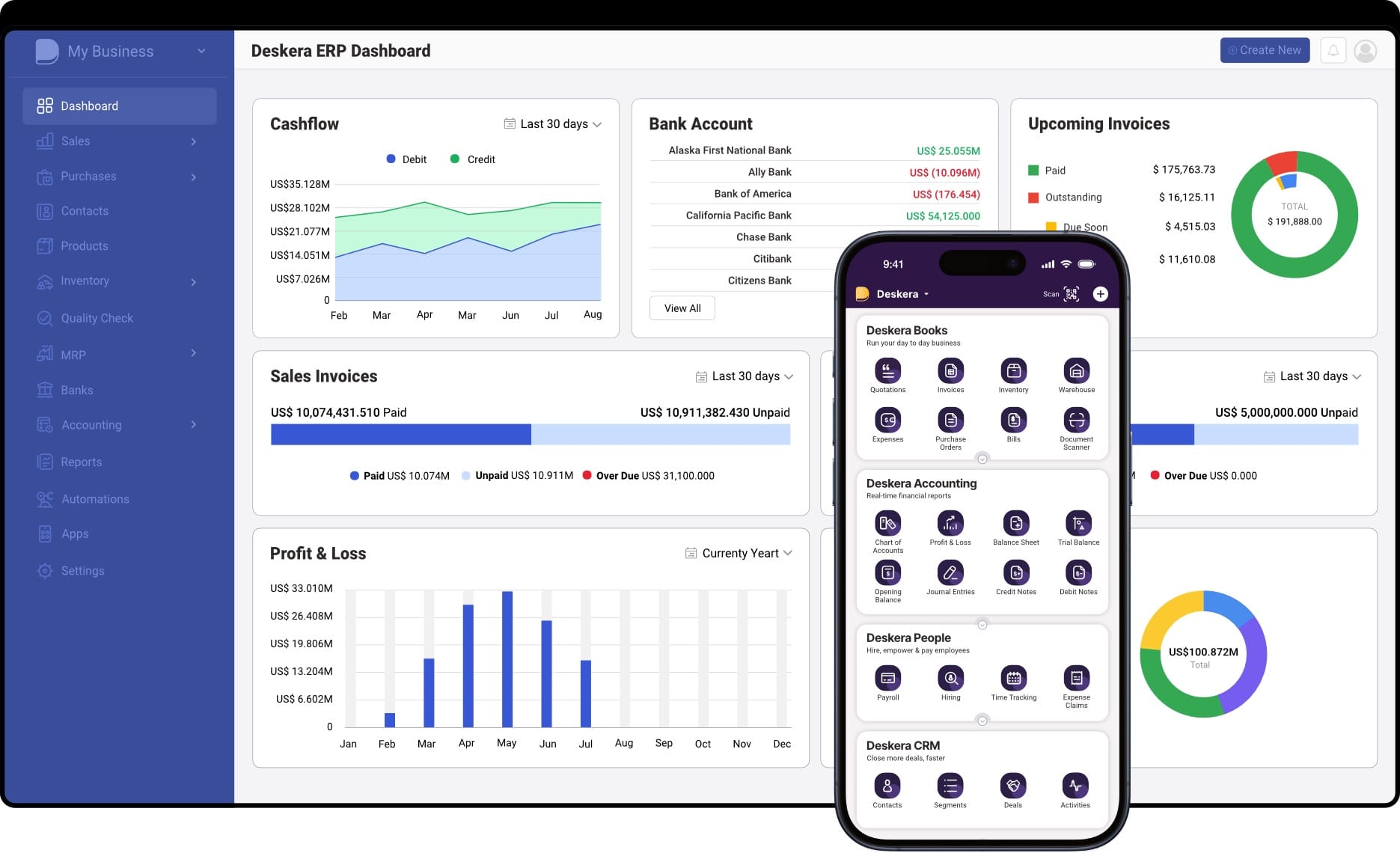Have you ever made a decision as a leader that felt right in the moment—but led to unexpected consequences later? You’re not alone. Even the most experienced leaders make mistakes in judgment, often because they’re under pressure, overloaded with information, or simply unaware of better alternatives. The key to strong leadership isn’t always making perfect decisions—it’s recognizing the pitfalls and learning how to avoid them.
In today’s fast-paced business environment, every decision can have a ripple effect—from missed revenue opportunities to drops in employee morale. Unfortunately, many leaders fall into the same traps repeatedly: relying too much on gut instinct, delaying action, or ignoring diverse perspectives. These mistakes can slow down progress and even create long-term setbacks if left unchecked.
But here’s the good news: decision-making is a skill that can be strengthened. By understanding the most common decision-making errors and implementing proactive strategies, leaders can sharpen their judgment, boost team performance, and drive consistent results. In this blog, we’ll uncover 15 of the most frequent mistakes leaders make—and show you how to steer clear of them.
To support better, faster, and more informed decision-making, tools like Deskera ERP can be game-changers. Deskera ERP integrates accounting, inventory, CRM, and HR into a unified platform—giving leaders real-time insights, customizable reports, and AI-driven recommendations. With mobile access and automation features, it reduces manual effort and enhances visibility across operations. Whether you're running a small business or scaling rapidly, Deskera makes smarter decision-making simpler.
What is Effective Decision-Making?
Effective decision-making is the ability to choose the best possible course of action that aligns with your business goals, even when faced with complexity, uncertainty, or conflicting priorities. It’s not about always being right—but about consistently making informed, timely, and goal-oriented decisions that drive positive outcomes. At its core, effective decision-making boosts business results by combining critical thinking with a structured process.
This process typically begins with clearly defining the problem and placing it in the context of broader organizational objectives. From there, decision-makers gather and analyze relevant data, assess potential risks, evaluate multiple alternatives, and then implement the most viable solution. Importantly, this approach also includes monitoring the outcomes to refine future decisions and improve over time. Without clarity on priorities and measurable goals, even the most structured process can falter.
A defining feature of effective decision-making is the ability to balance competing demands—short-term versus long-term impacts, stakeholder expectations versus operational feasibility—while maintaining objectivity. Leaders must remain mindful of emotional biases, groupthink, and assumptions that can skew their perspective. This is especially critical in high-stakes decisions, where both speed and accuracy are vital.
Ultimately, effective decision-making is a dynamic skill. It requires not just analysis, but also judgment, adaptability, and the wisdom to know when to act swiftly and when to pause for deeper evaluation. Whether resolving an urgent operational issue or planning a multi-year strategy, the most successful leaders apply a consistent decision-making framework that aligns actions with outcomes.
Key Benefits of Effective Decision-Making
Effective decision-making doesn’t just solve problems—it drives sustainable growth, builds trust, and empowers teams. When leaders consistently make informed, timely, and objective decisions, the entire organization benefits through improved performance, reduced risks, and stronger alignment with long-term goals.
1. Improved Business Performance
Effective decisions are closely aligned with business goals and priorities. This leads to better resource allocation, increased productivity, and stronger overall performance. When leaders consistently make smart, timely decisions, it drives measurable growth and competitive advantage.
2. Faster Problem Solving
A structured decision-making process enables leaders and teams to resolve issues quickly and confidently. Whether it’s a supply chain disruption or a customer service challenge, clear thinking and objective analysis help identify root causes and implement timely solutions.
3. Reduced Risk and Uncertainty
Effective decision-making involves evaluating options, weighing risks, and considering long-term impacts. This reduces the chances of costly errors and helps businesses navigate uncertainty with more confidence and resilience.
4. Stronger Team Alignment and Morale
When decisions are transparent, data-driven, and aligned with company values, teams are more likely to support and trust leadership. This boosts morale, reduces resistance to change, and fosters a culture of accountability and collaboration.
5. Increased Efficiency and Productivity
Clear, well-informed decisions eliminate ambiguity, streamline workflows, and prevent unnecessary back-and-forth. Teams can act decisively, knowing their efforts are aligned with strategic direction.
6. Better Use of Resources
Effective decision-making ensures that time, money, and talent are focused on high-impact activities. It minimizes waste and maximizes returns by choosing the best course of action with the highest potential value.
7. Enhanced Innovation and Growth
When leaders evaluate diverse perspectives and use objective data, they’re more likely to spot new opportunities. Effective decision-making encourages calculated risk-taking, which is essential for innovation and long-term growth.
8. Stronger Stakeholder Confidence
Stakeholders—including investors, employees, and customers—feel more secure when they see a track record of sound decisions. It builds trust and strengthens your reputation as a capable and forward-thinking leader or organization.
15 Common Decision-Making Mistakes and How to Avoid Them
Decision-making is one of the most critical aspects of leadership and business success. Yet, many decision-makers fall into recurring traps—often unknowingly. A 2024 study revealed that over 50% of organizations suffer from decision-making approaches that are either unclear or stagnant. Whether internal (like fear of failure) or external (like organizational politics), these mistakes can derail outcomes.
Below are 15 of the most common decision-making mistakes—along with actionable strategies to avoid them.
1. Lack of Resources and Support
One of the most common decision-making mistakes is proceeding without the right resources and stakeholder support. Decisions made in silos can lead to inefficiencies, overlooked risks, and implementation failures.
For instance, a strategic decision may appear sound but fall apart during execution due to the absence of operational readiness or financial backing. The lack of cross-departmental communication can also lead to resistance from key teams.
How to Avoid It: Ensure that all relevant departments—finance, operations, HR, legal, etc.—are looped in from the start. Build a coalition of support early by explaining the rationale, potential impact, and value of the decision.
Develop a clear implementation plan backed by resources, timelines, and accountability structures. Utilize stakeholder mapping tools to identify and involve key influencers who can help secure organizational alignment and support.
2. Inability to Manage Risk
Failing to anticipate or plan for potential risks can lead to costly consequences. Many decisions are made with optimism but without a realistic appraisal of what could go wrong.
This often stems from inexperience, cognitive bias, or the pressure to act quickly. As a result, businesses may suffer from compliance issues, reputational damage, or operational disruptions.
How to Avoid It: Implement formal risk assessment frameworks like SWOT, PESTLE, or scenario analysis. Assemble ad hoc risk teams that include legal, compliance, and operational experts to explore worst-case scenarios.
Encourage a risk-aware culture where decision-makers are not penalized for raising concerns. Incorporate contingency plans and risk mitigation strategies into the overall decision-making process to stay agile under changing conditions.
3. Misidentifying the Problem
A poorly defined problem often leads to a poor solution. Many leaders fall into the trap of solving what appears to be the issue, only to realize later they were treating a symptom, not the root cause. This results in wasted time, resources, and lost opportunities.
How to Avoid It: Invest in root cause analysis techniques such as the 5 Whys, Fishbone Diagrams, or flowcharts. Involve frontline employees and customers in the discovery process to gain real-world insights.
Use data and performance metrics to validate assumptions. Take time to properly frame the problem by clearly articulating what is happening, who is affected, and why it matters. Proper diagnosis is half the solution.
4. Fear of Failure
Fear of failure can be paralyzing for leaders and teams. This emotional barrier often leads to decision delays, over analysis, or total inaction. The fear stems from a lack of confidence, fear of judgment, or the high visibility of the decision's impact. In extreme cases, it leads to missed opportunities and a culture of indecisiveness.
How to Avoid It: Foster a culture that views failure as a learning opportunity rather than a personal shortcoming. Break major decisions into smaller, manageable steps to reduce perceived risk. Build psychological safety within teams so members feel safe voicing ideas and concerns.
Create backup plans to boost confidence in the decision-making process. Encourage experimentation and iterative decision-making where feedback loops can guide course correction.
5. Incomplete or Unreliable Information
Decisions made with inadequate or incorrect data can lead to poor outcomes. This usually happens due to time constraints, reliance on outdated sources, or confirmation bias that skews data interpretation. Leaders may rush decisions without verifying facts, leading to faulty logic or missed alternatives.
How to Avoid It: Establish standardized procedures for data gathering and validation. Use dashboards, reports, and analytics platforms to provide real-time, accurate information. Encourage teams to challenge data sources and cross-verify important facts.
Set minimum data requirements for high-impact decisions and allocate time for proper analysis. Recognize that acting on flawed information can be more harmful than a delayed decision made on sound data.
6. Analysis Paralysis and Information Overload
In an age of big data, decision-makers often drown in too much information. Analysis paralysis occurs when individuals overanalyze every detail and delay making decisions for fear of missing something. While due diligence is important, overthinking can stall progress and create a bottleneck in execution.
How to Avoid It: Define clear objectives and decision criteria in advance. Identify which information is truly essential versus what is just "nice to have." Limit the number of decision-makers to avoid conflicting opinions and over-discussion.
Use decision-making tools like decision matrices or priority grids to streamline the process. Establish deadlines and hold teams accountable for making decisions within set timeframes.
7. Organizational Resistance and Political Pressure
Even well-intended decisions can face pushback due to organizational politics or resistance to change. Political pressure can cause decision-makers to compromise on the best course of action to appease influential stakeholders. This undermines the integrity of the decision and can stall innovation.
How to Avoid It: Map out key stakeholders and assess their influence and interest levels. Communicate transparently about the goals, rationale, and benefits of the decision.
Apply change management principles to prepare, equip, and support individuals through change. Use pilot programs to demonstrate value before full-scale rollout. Build strategic alliances with influential leaders to help diffuse resistance and promote acceptance.
8. Cognitive Bias
Everyone has biases—from confirmation bias to anchoring to availability heuristics. These subconscious tendencies can skew decision-making by favoring certain information, ignoring evidence, or jumping to conclusions. Leaders unaware of their biases risk making decisions based on flawed logic or personal preferences.
How to Avoid It: Educate yourself and your team about common cognitive biases. Introduce structured decision-making methods such as red-teaming, pre-mortems, or devil's advocacy to challenge assumptions.
Use diverse teams to bring different perspectives and reduce the influence of individual bias. Document your reasoning and review it critically before finalizing any high-stakes decision.
9. Groupthink
Groupthink occurs when the desire for group cohesion overrides critical thinking. Team members may suppress dissenting views to conform with the dominant opinion, often leading to poor decisions. This is particularly prevalent in hierarchical or close-knit teams.
How to Avoid It: Create an environment that encourages open dialogue and dissenting opinions. Assign a devil’s advocate in group discussions to challenge prevailing views. Use anonymous voting or surveys to surface honest input.
Rotate leadership roles during discussions to distribute influence. Emphasize that disagreement is not disloyalty but a sign of engagement and rigor.
10. Unclear Goals and Priorities
Decisions made without clear goals or aligned priorities often result in confusion and misalignment. Without a strategic north star, teams may make contradictory decisions or pursue efforts that don't support long-term success.
How to Avoid It: Clarify objectives and success metrics before initiating the decision-making process. Involve leadership and stakeholders to ensure alignment across departments.
Use goal-setting frameworks like OKRs (Objectives and Key Results) to link decisions to broader organizational priorities. Revisit goals regularly to adjust as the environment or strategy evolves.
11. Overconfidence
While confidence is essential, overconfidence can blind decision-makers to risks and alternative solutions. Leaders may rely too much on past success or gut instinct and ignore valuable data or feedback. This can result in poor judgment and costly errors.
How to Avoid It: Stay humble and curious. Regularly seek feedback and stress-test decisions with colleagues or advisors. Use simulations or scenario planning to expose blind spots.
Encourage a culture of accountability where assumptions are questioned and learning is continuous. Measure actual outcomes and compare them to expectations to calibrate your confidence level over time.
12. Failure to Delegate
Some leaders try to make all decisions themselves, leading to bottlenecks and burnout. This centralization not only limits scalability but also demotivates team members who feel underutilized.
How to Avoid It: Empower teams by clearly defining roles, responsibilities, and decision-making authority. Use the RACI framework (Responsible, Accountable, Consulted, Informed) to delegate effectively.
Build trust through training and support so others can make informed decisions. Recognize and reward good decision-making at all levels to build confidence and ownership.
13. Ignoring Long-Term Impact
Short-term thinking may deliver immediate results but often at the cost of long-term sustainability. Decisions focused solely on quick wins can lead to reputational damage, employee disengagement, or strategic drift.
How to Avoid It: Adopt a long-term mindset in decision-making by incorporating environmental, social, and economic impact assessments. Use tools like the Balanced Scorecard to evaluate decisions across multiple dimensions.
Include future-oriented stakeholders in the process, such as sustainability officers or innovation leads. Reframe decisions around long-term value creation, not just quarterly performance.
14. Lack of Post-Decision Evaluation
Many organizations fail to review their decisions after execution. Without evaluation, mistakes are repeated, and opportunities for learning are lost. This undermines continuous improvement and innovation.
How to Avoid It: Establish a habit of conducting post-mortems or after-action reviews. Document what worked, what didn’t, and why. Share lessons learned across teams to institutionalize knowledge.
Use this feedback to refine frameworks and improve future decision-making processes. Treat every decision as a learning opportunity.
15. Decision Fatigue
Constant decision-making can deplete mental energy, leading to poor-quality choices as the day progresses. Decision fatigue is common among leaders juggling multiple responsibilities and high workloads.
How to Avoid It: Prioritize high-stakes decisions for early in the day when mental energy is highest. Automate routine decisions or create standard operating procedures to minimize cognitive load.
Delegate less critical choices to trusted team members. Take regular breaks and manage your workload to avoid burnout. Recognize that decision quality is directly tied to mental clarity and well-being.
How Deskera ERP Can Help You Make Better Business Decisions
Today’s business environment demands fast, accurate, and collaborative decision-making. Yet, many companies are limited by siloed data, manual processes, and slow communication. That’s where Deskera ERP comes in.

- Consolidate Your Business Data: With Deskera, all your financials, inventory, HR, and operations are managed in one centralized system—giving decision-makers a unified, real-time view of the business.
- Eliminate Information Silos: Deskera removes barriers between departments, allowing cross-functional teams to work with the same up-to-date data, reducing miscommunication and delays.
- Make Informed, Real-Time Decisions: The platform provides dashboards and customizable reports that present key insights instantly—empowering leaders to act quickly and accurately.
- Reduce Decision Fatigue: Deskera automates repetitive tasks and workflows, freeing up mental bandwidth for more strategic thinking and preventing burnout.
- Align Stakeholders with Clarity: Its built-in collaboration tools and visual reports ensure that all stakeholders understand the rationale behind decisions, reducing resistance and increasing buy-in.
- Support Risk Management: Deskera enables scenario planning, audit trails, and real-time alerts, helping you proactively identify and mitigate risks before they escalate.
- Drive Long-Term Value: From demand forecasting to compliance tracking, Deskera supports strategic planning that balances immediate needs with long-term goals.
In short, Deskera ERP is more than just software—it’s a decision-making enabler that helps you lead your business with clarity, speed, and confidence.
Key Takeaways
- An effective decision is timely, data-driven, aligned with strategic objectives, and supported by stakeholders. It considers both short- and long-term outcomes and can be acted upon with confidence.
- Clear, well-informed decisions align teams, optimize resources, reduce risk, and drive consistent progress toward business goals.
- Always align decisions with available resources and secure cross-functional support to prevent breakdowns during implementation.
- Incorporate risk assessment tools and contingency planning to avoid being blindsided by potential pitfalls.
- Clarify the real problem before acting—use root cause analysis to avoid solving surface-level symptoms.
- Foster a culture where failure is seen as a learning opportunity, not a threat, to encourage proactive and confident decision-making.
- Base decisions on accurate, up-to-date, and validated data rather than assumptions or outdated reports.
- Set information boundaries and use prioritization tools to combat analysis paralysis and avoid decision delays.
- Address organizational politics through stakeholder mapping and transparent communication to maintain decision integrity.
- Be aware of cognitive biases and challenge assumptions systematically to reach balanced, objective decisions.
- Encourage diverse perspectives and structured debate to avoid the conformity trap of groupthink.
- Define clear, measurable goals and align all decisions accordingly to maintain direction and effectiveness.
- Balance confidence with humility by testing assumptions and seeking feedback, ensuring decisions stay grounded in reality.
- Delegate effectively and empower teams to make decisions, reducing leadership bottlenecks and increasing team ownership.
- Consider both short- and long-term impacts of decisions to avoid trading sustainability for short-lived gains.
- Review the outcomes of key decisions regularly to learn what worked and what didn’t—and continuously improve your process.
- Combat decision fatigue by automating routine tasks and prioritizing high-impact decisions early in the day.
Related Articles












